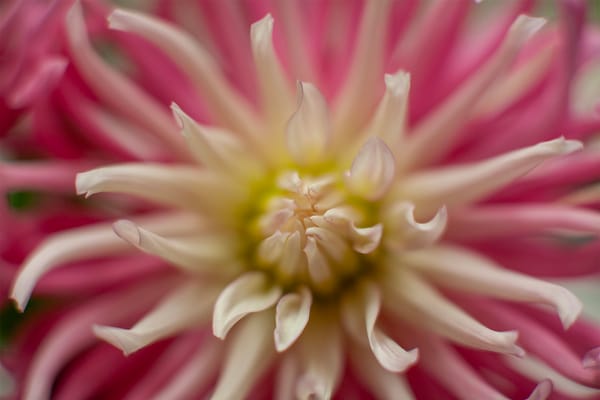In the heart of every cherished dahlia is a story—a colour that captivated you, a form that stood taller or bloomed longer than the rest. Gardeners who grow with a collector’s eye know the quiet frustration of a treasured variety fading away or losing its spark over time. But there’s a craft that keeps these favourites alive, season after season, with all their original brilliance intact.
That craft is advanced propagation—more than just sticking a shoot in soil and hoping for roots. This is the gardener’s way of capturing a moment of perfect growth and repeating it faithfully, unlocking the potential to clone your best performers and build a stronger, more uniform collection year after year.
Why Clone? The Pursuit of Consistency and Vigour
Dahlias, for all their showy generosity, are genetically unpredictable when grown from seed. No matter how stunning the parent, seedlings grow into wildcards—a genetic lottery where colour, form, and vigour scatter in every direction.
For this reason, professional growers and discerning home gardeners rely on clonal propagation. Unlike dividing tubers—a useful but sometimes coarse method—propagation through cuttings offers speed, precision, and the ability to multiply plants rapidly without compromising their genetic identity.
A single healthy tuber, treated well, can yield a dozen identical, vigorous plants before it ever touches open soil. Each one destined to mirror the parent’s best traits, from colour intensity to stem strength.
The Basal Cutting: A Classic Reimagined
Nature’s Starting Point for Stronger Plants
The basal cutting is no secret to experienced growers, but in the right hands, it’s a technique elevated to an art form. These are the shoots that emerge at the very base of the tuber when it first stirs from dormancy—a signal of life ready to be multiplied.
Taken at the right moment, these shoots root with ease and establish faster than later-season divisions or top cuttings. They carry not only the genetic code of their parent but a natural store of energy primed for growth.
Step by Step: The Advanced Basal Cutting Method
- Waking the Tuber
In late winter—January or February in Cornwall—nestle your tubers in trays of barely moist, peat-free compost in a warm, bright spot. Aim for 16–21°C. - The Moment to Strike
When shoots stretch to 6–8cm, with two to three healthy leaf sets, they’re at their peak for cutting. Too small, and they’re weak; too tall, and they risk hollowness or flowering too soon. - The Cut
With a clean, sharp knife, slice each shoot away at its base. If possible, include a sliver of tuber—this slight injury point is a powerhouse for rooting. Always leave a few shoots behind to ensure the mother tuber’s survival. - Preparing the Cutting
Remove lower leaves to reduce moisture loss. Optionally, dip in rooting hormone—or natural alternatives like willow water or aloe vera gel. - Planting
Insert the cutting into free-draining compost topped with horticultural grit. Cover with a clear bag or use a heated propagator. Keep warm, lightly moist, and away from harsh light. - Patience and Aftercare
In 2–4 weeks, roots form. Harden off gradually and plant out after frost. Each cutting, if treated well, will form its own tuber by season’s end.
Mist Propagation: The Professional’s Shortcut to Mass Success
For growers scaling up—or those wanting a near-foolproof method—mist propagation offers an advanced, controlled approach.
By maintaining perfect humidity without saturating the soil, mist systems reduce stress on cuttings and eliminate the common pitfalls of rot and desiccation. With intermittent sprays and bottom heat, roots develop rapidly, even in large batches.
The Essentials of Mist Propagation
- Substrate: Use sterile, free-draining mixes like perlite or sand.
- Temperature: Air at 18–20°C; bottom heat at 20–22°C.
- Light: Bright but indirect.
- Humidity: Intermittent misting every 10–20 minutes; avoid constant dripping.
- Airflow: Essential to prevent fungal diseases.
This method, often reserved for commercial growers, is achievable at home with a simple mist bench and heating mat—transforming the propagation of prized varieties into a near-guaranteed success story.
Timing Is Everything: The Critical Window for Vigour
Taking cuttings is as much about when as how. Early spring—February to April—is your golden window. Shoots taken in this period root faster, grow stronger, and have the entire growing season ahead to flourish and form their own tubers.
Start too late, and cuttings may root, but they’ll lag in growth, flowering late or even failing to tuberize before autumn.
Early forcing of tubers allows for multiple waves of cuttings—each one a carbon copy of your finest plants.
Alternatives to Commercial Rooting Hormone: Natural Boosters
For those avoiding synthetic products, nature provides its own rooting aids:
- Willow Water: Rich in natural auxins—ideal for stimulating roots.
- Aloe Vera Gel: Nourishes and protects; doubles as a rooting medium.
- Cinnamon: Not a root stimulant, but an excellent antifungal barrier.
- Honey & Apple Cider Vinegar: Gentle, natural antibacterial agents.
These alternatives, combined with good hygiene and the right conditions, offer a sustainable, effective route to successful propagation.
Building a Legacy: The Home Gardener’s Propagation Plan
With basal and mist propagation, the advanced gardener’s toolkit offers a clear route to multiplying high-quality dahlias:
| Method | Ideal For | Pros | Cons |
|---|
| Basal Cuttings | Small/medium batches | Simple, reliable | Labour-intensive |
| Mist Propagation | Large batches, pros | High success, fast rooting | Needs equipment & control |
| Action | Timing (UK) | Outcome |
|---|
| Start Tubers | Jan–March | Strong basal shoot growth |
| Take Cuttings | Feb–April | Maximum vigour, best rooting |
| Mist Propagation | Feb–April | Scalable propagation |
| Plant Out | After last frost | Clones establish well |
The Gardener’s Reward: Clones That Carry the Story Forward
Whether you grow for the show bench, the cutting garden, or the sheer joy of a perfect bloom, advanced propagation is your pathway to consistency—and perhaps, even legacy.
By mastering these techniques, you’re not just increasing your plants—you’re preserving a lineage. Every cutting is a story repeated, a chapter that began with one perfect bloom and carries on with every clone planted.
In this way, propagation becomes more than a skill. It becomes an act of stewardship—a quiet, expert craft that keeps the garden’s best moments alive, season after season.











